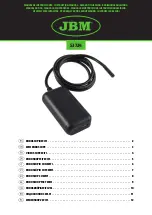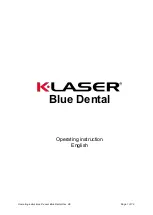
2
2. Indications for Use
Pericardial valves are indicated for use in patients suffering
from valvular heart disease. Aortic valvular heart disease is a
condition involving any of the following: obstruction of the
aortic heart valve or stenosis; leakage of the aortic valve,
known as regurgitation, incompetence, or insufficiency; and
combinations of the two, sometimes referred to as mixed
disease or combined lesions.
Aortic valvular heart disease may be caused by any number of
factors, including congenital abnormalities, infection by various
microorganisms, degenerative calcification, and rheumatic
heart disease.
Pericardial valves are used particularly in those patients for
whom long-term anticoagulation is contraindicated or who may
be difficult to maintain on anticoagulation therapy.
The Carpentier-Edwards PERIMOUNT Magna pericardial
bioprosthesis is intended for use in patients whose aortic
valvular disease is sufficiently advanced to warrant replacement
of their natural valve with a prosthetic one. It is also intended
for use in patients with a previously implanted aortic valve
prosthesis that is no longer functioning adequately and
requires replacement. In the latter case, the previously
implanted prosthesis is surgically excised and replaced by the
replacement prosthesis. The valve can be implanted in either
the supra-annular or intra-annular position.
3. Contraindications
Do not use if surgeon believes such would be contrary to the
best interests of the patient. The actual decision for or against
the use of this valve must remain with the surgeon who can
evaluate all the various risks involved, including the anatomy
and pathology observed at the time of surgery.
4. Warnings
For Single Use Only
DO NOT RESTERILIZE THE VALVE BY ANY METHOD.
Exposure
of the bioprosthesis or container to irradiation, steam, ethylene
oxide, or other chemical sterilants will render the bioprosthesis
unfit for use.
DO NOT FREEZE OR EXPOSE THE VALVE TO EXTREME HEAT.
Each bioprosthesis in its jar is shipped in a molded foam
enclosure containing a temperature indicator, which is intended
for monitoring the temperature that the device is exposed to
during transit. If the indicator has been activated, indicating the
valve has been exposed to freezing temperatures or has had
prolonged exposure to heat, do not use the valve. Please refer
to the Storage section (10.3) for further instructions.
DO NOT USE
the bioprosthesis if the tamper evident seal is broken.
DO NOT USE
if expiration date has elapsed.
DO NOT USE
the bioprosthesis if the container is leaking,
damaged, or the glutaraldehyde solution does not completely
cover the bioprosthesis.
DO NOT EXPOSE
the valve to any solutions, chemicals,
antibiotics, etc. except for the storage solution or sterile
physiological saline solution, as irreparable damage to the leaflet
tissue may result that is not apparent under visual inspection.
DO NOT ALLOW
the valve tissue to dry. It must be kept moist
at all times. Maintain tissue moisture with sterile physiological
saline irrigation on both sides of the leaflet tissue.
DO NOT PASS CATHETERS
, transvenous pacing leads, or any
surgical instrument across the valve since it may cause tissue
damage.
DO NOT USE
the valve if it has been dropped, damaged, or
mishandled in any way. Should a bioprosthesis be damaged
during insertion, do not attempt repair.
DO NOT HANDLE
the leaflet tissue of the bioprosthesis with
instruments or cause any damage to the valve tissue. Even the
most minor tissue perforation may enlarge in time to produce
significant impairment of valve function.
Clinical data which establishes the safety and efficacy of the
valve for use in patients under the age of 20 is not available;
therefore, we recommend careful consideration of its use in
younger patients.
The decision to use a tissue valve must ultimately be made by
the physician on an individual basis after a careful evaluation of
the short- and long-term risks and benefits to the patient and
consideration of alternative methods of treatment. Long-term
durability has not been established for bioprostheses.
Serious adverse events, sometimes leading to replacement of
the valve and/or death, may be associated with the use of
prosthetic valves (see
6. Adverse Events
). A full explanation of
the benefits and risks should be given to each prospective
patient before surgery.
Note:
Bioprostheses should be used with caution in the
presence of severe systemic hypertension or when the
anticipated patient longevity is longer than the known longevity
of the prosthesis (see
7. Clinical Studies
).
Careful and continuous medical follow-up (at least by an annual
visit to the physician) is advised so that valve-related
complications, particularly those related to material failure, can
be diagnosed and properly managed.
Recipients of prosthetic heart valves who are undergoing dental
procedures should receive prophylactic antibiotic therapy to
minimize the possibility of prosthetic infection.
Bioprosthetic heart valve recipients should be maintained on
anticoagulant therapy (except where contraindicated) during the
initial healing stages after implantation, approximately 2 to
3 months. Anticoagulants should then be discontinued over a
period of 10 days, except in those patients for whom indefinite
anticoagulant protection is indicated, i.e., in the absence of sinus
rhythm and in patients with a dilated left atrium, calcification of
the atrial wall, or history of previous atrial thrombus. However,
the appropriate anticoagulation therapy must be determined by
the physician on an individual basis (Ref. 1).
149256001A_EN_ES_PT 16.2.2005 14:30 Uhr Seite 2



































